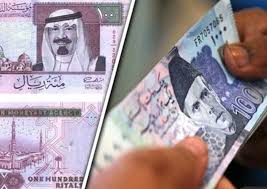Riyal to PKR
The exchange rate between the Saudi Riyal (SAR) and the Pakistani Rupee (PKR) plays a significant role in the economic relationship between Saudi Arabia and Pakistan. For many Pakistanis, particularly those working in Saudi Arabia, the riyal to PKR exchange rate directly impacts their income, savings, and remittances sent back home. In this article, we’ll explore the factors influencing the riyal to PKR exchange rate, its effects on various sectors of the economy, and how to stay updated on the latest rates.
1. What Is the Riyal to PKR Exchange Rate?
The riyal to PKR exchange rate indicates how much one Saudi Riyal is worth in Pakistani Rupees. For example, if the exchange rate is 75 PKR to 1 SAR, it means you need 75 Pakistani Rupees to buy one Saudi Riyal. This rate fluctuates regularly due to various economic, political, and market-driven factors.
2. Factors Influencing the Riyal to PKR Exchange Rate
Several key factors influence the riyal to PKR exchange rate:
Oil Prices: Saudi Arabia is one of the world’s largest oil exporters, and its economy is heavily dependent on oil revenues. Fluctuations in global oil prices can impact the value of the Saudi Riyal, which in turn affects the exchange rate with the Pakistani Rupee.
Remittances: A significant portion of Pakistan’s foreign exchange reserves comes from remittances sent by Pakistanis working in Saudi Arabia. High remittance inflows can strengthen the PKR, leading to a lower riyal to the PKR exchange rate.
Economic Stability: The economic stability of both countries affects the exchange rate. A stable Saudi economy generally leads to a stronger riyal, while economic challenges in Pakistan can weaken the PKR.
Interest Rates: Differences in interest rates between Saudi Arabia and Pakistan can influence the exchange rate. Higher interest rates in Pakistan might attract more investments in rupees, strengthening the PKR.
Political Relations: The political relationship between Saudi Arabia and Pakistan can also impact the exchange rate. Strong bilateral ties may lead to favorable trade agreements or financial assistance, which can stabilize or strengthen the PKR.
3. Impact of the Riyal to PKR Exchange Rate on the Pakistani Economy
The riyal to PKR exchange rate has far-reaching effects on various sectors of the Pakistani economy:
Remittances: A favorable riyal to the PKR exchange rate means that remittances sent by Pakistani workers in Saudi Arabia have a higher value when converted into rupees. This can boost the income of families relying on these funds, contributing to economic stability at the household level.
Trade and Imports: Saudi Arabia is a key trade partner for Pakistan, particularly in the oil sector. A higher exchange rate means that importing goods from Saudi Arabia becomes more expensive, which can increase the cost of fuel and other essential commodities in Pakistan.
Foreign Debt: Pakistan’s foreign debt is often denominated in foreign currencies, including the Saudi Riyal. A weakening PKR against the riyal increases the cost of repaying this debt, putting additional strain on the country’s financial resources.
Investment: The exchange rate can influence investment decisions. A stronger PKR relative to the riyal may attract more investment from Saudi businesses looking to capitalize on favorable currency conditions.
4. Historical Trends in the Riyal to PKR Exchange Rate
Understanding the historical trends of the riyal to PKR exchange rate can provide valuable context for its current level:
Long-Term Stability: The Saudi Riyal has been relatively stable over the years due to Saudi Arabia’s fixed exchange rate policy, which pegs the riyal to the US Dollar. However, the PKR has experienced fluctuations due to economic challenges, leading to changes in the riyal to PKR exchange rate.
Impact of Oil Prices: Major shifts in global oil prices have historically influenced the exchange rate. For example, periods of low oil prices can lead to a weaker riyal, which may result in a more favorable exchange rate for the PKR.
5. How to Stay Updated on the Latest Riyal to PKR Exchange Rates
Keeping track of the latest riyal to PKR exchange rate is crucial for making informed financial decisions, especially for those involved in remittances, trade, or investment. Here are some ways to stay updated:
Currency Exchange Websites: Websites like XE.com, OANDA, and local Pakistani platforms provide real-time updates on the riyal to PKR exchange rate. These platforms are convenient for quick checks and conversions.
Financial News Outlets: Regularly following financial news through TV channels, newspapers, or online sources can keep you informed about broader economic trends and specific changes in the exchange rate.
Bank Notifications: Many banks offer services where they notify customers of changes in exchange rates via SMS or email. This can be particularly useful if you regularly deal with foreign currency transactions.
Currency Exchange Services: Local exchange bureaus and online currency exchange services often display the most current rates, which are updated throughout the day based on market conditions.
6. Tips for Exchanging Riyal to PKR
If you need to exchange riyals for rupees, consider the following tips to get the best rate and avoid potential pitfalls:
Compare Rates: Don’t accept the first rate you see. Different exchange bureaus might offer slightly different rates, so comparing a few options can help you secure a better deal. Also, get Link Exchange services to Transferring money from Pakistan to USA.
Monitor Market Trends: Exchange rates can fluctuate throughout the day. Monitoring these trends and choosing a favorable time to exchange can save you money.
Negotiate for Large Transactions: If you’re exchanging a large amount of currency, you might be able to negotiate a better rate with the exchange bureau.
Avoid Peak Times: Exchange rates can be less favorable during peak times, such as weekends or public holidays, when the market is less active. Plan your transactions accordingly to get a better rate.
Check for Hidden Fees: Some exchange bureaus may offer an attractive rate but charge hidden fees or commissions. Always ask about any additional charges before completing your transaction.
7. The Role of the Riyal to PKR Exchange Rate in Economic Planning
For policymakers and businesses, the riyal to PKR exchange rate is a critical factor in economic planning. For example, fluctuations in the exchange rate can impact budget planning, particularly for sectors that rely heavily on imports from Saudi Arabia, such as energy and manufacturing.
Moreover, the exchange rate can influence monetary policy decisions. A weakening PKR might prompt the State Bank of Pakistan to adjust interest rates or take other measures to stabilize the currency.
8. Understanding the Impact of Global Events on the Riyal to PKR Rate
Global events can significantly impact the riyal to PKR exchange rate. For instance, geopolitical tensions in the Middle East, changes in US monetary policy, or global economic downturns can all affect the value of the Saudi Riyal, which in turn influences its exchange rate with the PKR.
Staying informed about global developments and understanding their potential impact on the exchange rate can help you make better financial decisions, whether you’re involved in trade, remittances, or investment.
Conclusion
The riyal to PKR exchange rate is a crucial economic indicator that affects various aspects of Pakistan’s economy, from remittances and trade to foreign debt and investment. By understanding the factors that influence this rate and staying informed about the latest trends, you can make more informed decisions when dealing with foreign currency. Whether you’re a business owner, investor, or individual managing your finances, keeping an eye on the riyal to PKR exchange rate is essential for navigating the complexities of the forex market.

















